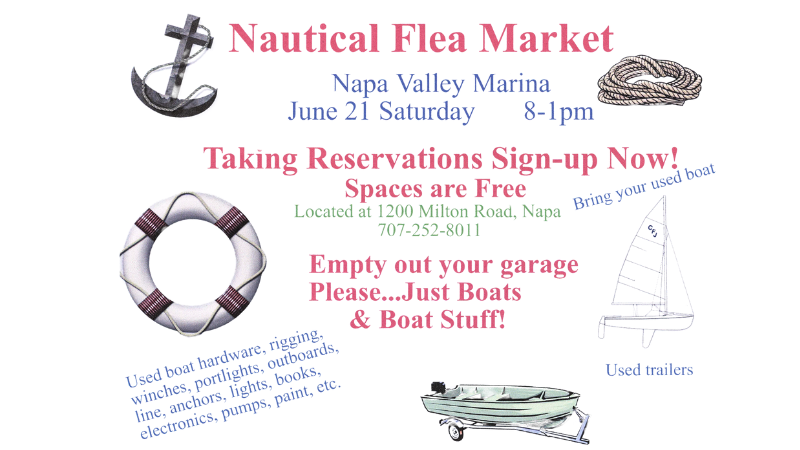
Eight Bells Toll for Lake Merritt Sailing Club
We don’t often see a sailing club close its doors, but when we do, it’s a sad day. After 88 years, the Lake Merritt Sailing Club has reached the end of its lifespan and is closing its doors for good. Denis Hazlewood, club commodore 2022–2025, shares the news with a recap of the club’s history and course through the decades.
It was surely not the first sailing organization on the lake, but in 1937 a group of Oakland small-boat sailors formed the Lake Merritt Sailing Club. By 1952 the club had grown so large that they incorporated as a California Nonprofit Mutual Benefit Corporation. The oldest club roster that we’ve been able to find is from 1969, and at that time the club boasted 281 members, with 255 senior sailors and 26 juniors. There were a total of 302 boats registered, representing 44 classes.
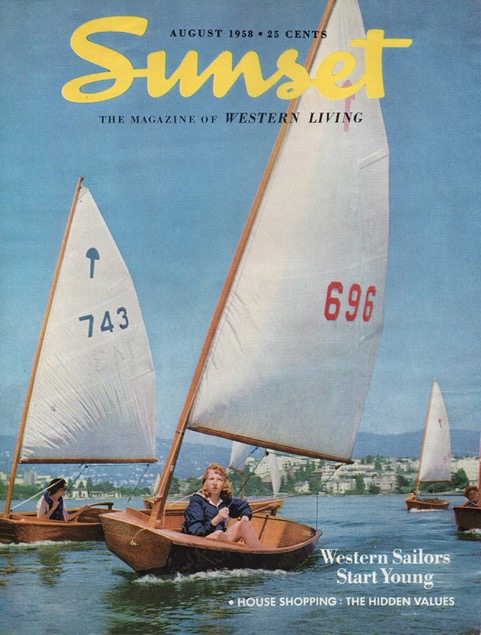
The largest fleet was El Toros, with 94 boats. In the other larger fleets there were 45 Lido 14s, 36 Snipes, 16 Blue Jays, 11 Flying Juniors, 9 Zephyrs, 7 Sunfish, 7 OK Dinghies, and 5 each 5O5s, Melodys, and Top Cats. Hanging in our garage at Lake Merritt is a photo taken sometime in the ‘50s, showing around 70 boats, from seven classes. In one 1972 regatta there were so many Lido14s on the starting line that the boats started in two ranks.
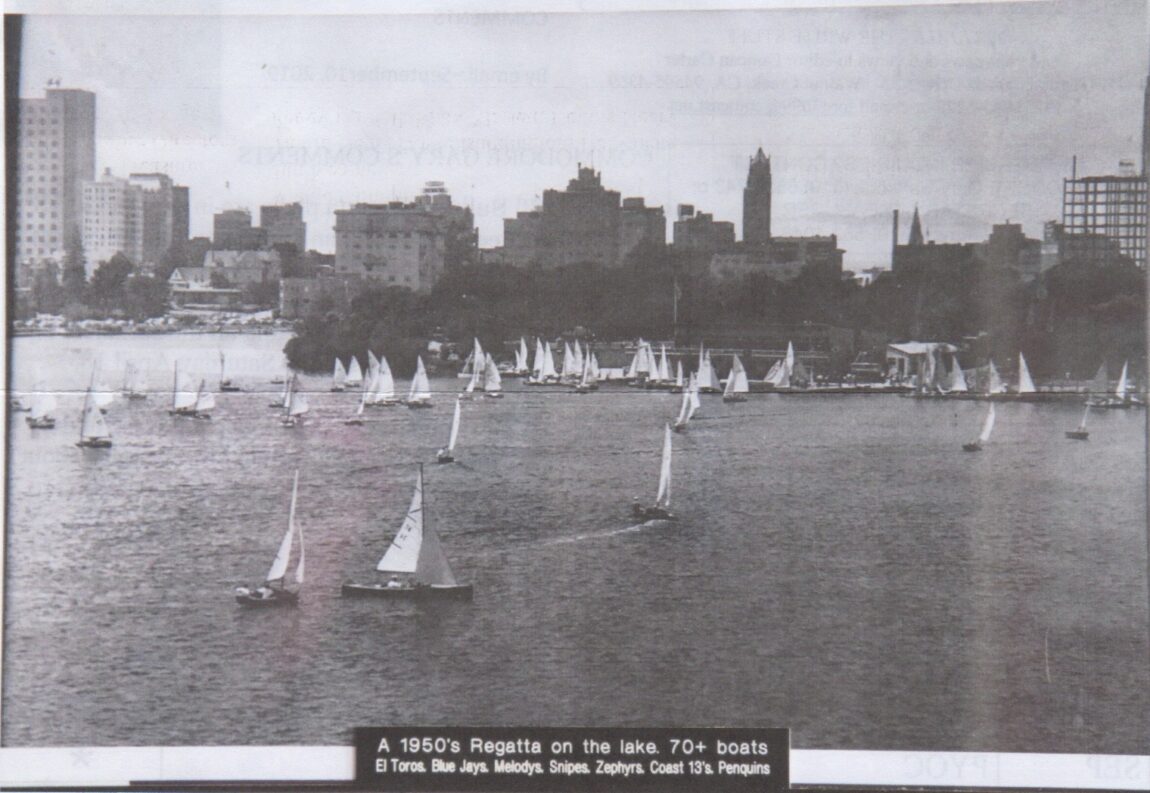
Over the years membership declined, and by 2022 was down to 25 members, with 12 sailboats, representing 5 classes. The largest fleet is still the El Toros, with 8 boats, and there are now one each: Laser, Sunfish, S.F. Pelican, and Strike 18. The commodore, too old to climb back into a capsized sailboat, rows his home-built sharpie skiff, Some Cats Swing.
For quite a few years the major club activities were the five regattas held each year. Beginning in 1999, the Edna and Howard Robinson Memorial midwinter series consisted of four monthly regattas of four races each. Until 2020, and the COVID 19 pandemic, this series was very well attended, and mostly kept the club “afloat” socially, and financially. For nearly 60 years the club had also hosted the City of Oakland Mayor’s Cup. This popular regatta was held each year near Independence Day, and attracted sailors from as far away as Chico, and Fresno.
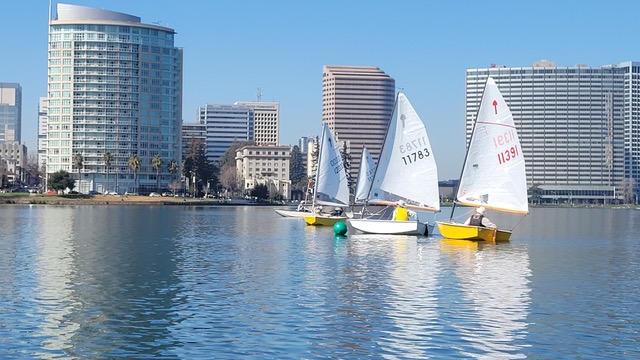
In 2022, in an attempt to increase the club’s income — and general Bay Area small-boat “footprint” — a second, 16-race summer/fall Commodore’s Curse series was begun. This new series never really took hold, and attendance was irregular at best. Due to the cost of the City of Oakland’s insurance requirements, this lack of participation put the club in financial peril.
In spring 2022 the commodore was contacted by the representative of a group who wished to be anonymously referred to as The Ladies. With four easily met requirements The Ladies offered to donate funds to help cover the club’s insurance cost through June 30, 2025. It’s now June 2025, The Ladies have met their commitment, the well is dry, and the membership has aged out. In January, by a margin of 65%, the members voted to end the club.
The sad reality is that, as of July 1, 2025, the 88-year-old Lake Merritt Sailing Club will have ceased to be, ending its nearly 90-year relationship with Lake Merritt, the City of Oakland, and the San Francisco Bay Area sailing community. It’s sad to say goodbye after so many years, so many memories, but we had a hell of a ride, with one hand on the tiller, and one hand for the mainsheet.
Fair winds and following seas to you all,
LAKE MERRITT SAILING CLUB, Denis Hazlewood, Commodore 2022–2025.
We share Denis’s sentiments; with such large numbers, it must have been “a hell of a ride.” We send a heartfelt “Fair winds and following seas” to the Lake Merritt Sailing Club members, family, friends and community.
Caption Contest(!)
D’oh! We can only hope this ended well. Welcome to this month’s Caption Contest(!). Perhaps someone can also tell us how they got out of this situation?
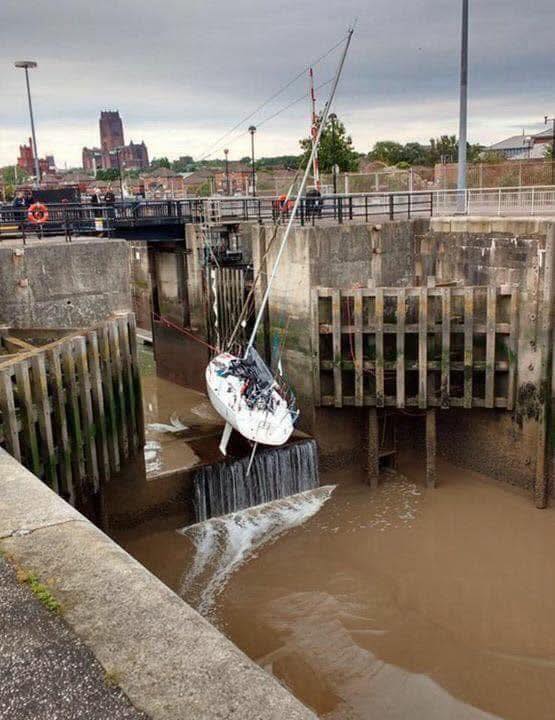
See the May Caption Contest(!) results in this month’s issue of Latitude 38.
Save the Date: Napa Valley Marina Nautical Flea Market
Transpac Profile: Disney’s ‘Pyewacket’ Adding Up the Miles
Once again, Roy Disney has assembled his highly experienced crew for this year’s 2025 Transpac. With Roy’s Volvo 70 Pyewacket fresh off a clean sweep in Antigua Race Week, the boat is now in transit to England for this years Fastnet Race, San Tropez Race Week, and the Rolex Maxi Worlds in Sardinia. Meanwhile, on the West Coast, Roy will be sailing his Andrews 68 Pyewacket in the 2025 Transpac.

There are probably more total Transpac miles on the Pyewacket crew than on any other boat. This will be Roy’s 26th Transpac, and as amazing as that might seem, watch captain Gary Weisman also has 26 Transpacs on his résumé. Next on the list are Ben Mitchell and Scott Easom with 21 each. Bowman Robbie Kane and navigator Peter Isler both have eight; Daryl Wislang, Brad Jackson, Tony Mutter and Torben Grael, four each. This doesn’t even take into account the combined 50-plus Pac Cups the team has done as well. The more difficult the conditions, the more this team’s experience shines.

All totaled it’s about 300,000 Transpac miles (or 12 circumnavigations) of racing to Hawaii by this crew. In 2019 their race was cut short when they stopped to rescue the crew of OEX after a rudder failure that caused the boat to sink. In 2021 they raced Disney’s modified Volvo 70 Pyewacket to a second in class, and in the 2023 Transpac they were back to win their class aboard the Andrews 68 Pyewacket.
If you’re looking to find a boat that knows the way to Hawaii, keep an eye on Pyewacket. (Listen to a podcast with Roy Disney here.)
When and Why Should Race Committees Alter the Course?
Following last weekend’s SoCal 300 to San Diego, leg three of California Offshore Race Week, racer Chip Merlin wrote us concerning the race committee’s decision to not change the race course in light of the forecast winds. Ultimately, the original course remained and many boats retired from the race.
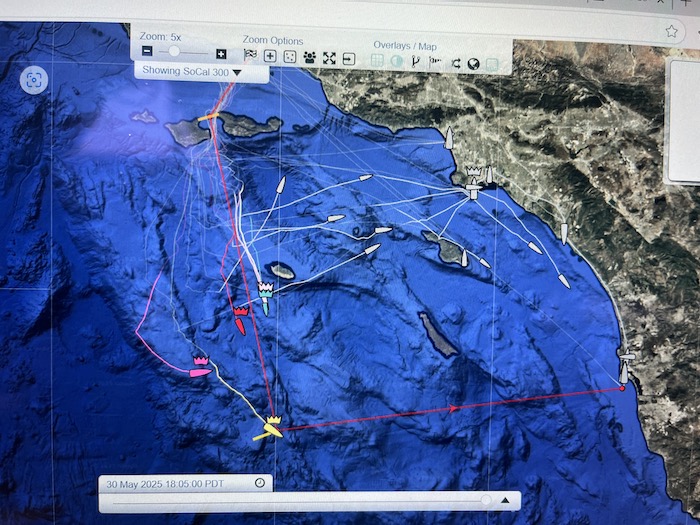
“Long before this photo was taken showing all of the retirements during the SoCal 300, we sent an email during the race to the Race Committee,” Chip wrote. “The Race Committee previously indicated at the pre-race briefing of the possibility for a shortened course at the last mark before turning to San Diego.” Chip also emailed the race committee the day before, asking if they intended to shorten the course. Their response came back as follows:
“Race Committee will not be shortening the course. Mother nature has provided marginal conditions this year. We have pondered the fairness of shortening the course at a late moment but have arrived at the decision to maintain the integrity of the course design, and premise that this is an offshore blue water race with all the exposure (or lack thereof) that comes with that.” They then likened the situation to mountain climbing. ” … sometimes there is not time to climb the mountain in the time allotted and in the prevailing conditions.”
While we can see their point, Chip has presented a different perspective on the matter. He continues. “I dedicated my book, Mavericks and Merlins, to the hard work of race committees. They are the unsung heroes who make our sport possible. I write this with the utmost respect. Race committees ensure safety, fairness, and challenge. They allow us to enjoy our beloved sport. But when decisions result in only five boats remaining on the course, boats scattered and spirits frayed, we have to ask: What memories will competitors, and others thinking about participating, take from this day? And more importantly, will they want to return or experience this sport?
“Sailboat racing, especially at the non-Grand Prix level, is as much about camaraderie as competition. Many of us come not just to test our boats and crews, but to see old friends and make new ones at the dock after the finish. That community spirit, that post-race connection, is as integral to our sport as any mark on the course. When decisions are made that diminish those human elements, we risk losing something far more important than a clean start; we risk losing people who stop coming back.
“This discussion isn’t about complaining or second-guessing under pressure. It’s about fostering a conversation about how we balance the integrity of course design with the reality of wind, participation, and the experience of all competitors. Especially in events not at the cutting edge of the racing circuit, shouldn’t we also champion accessibility, inclusion, and joy?
“I hope we can talk more openly about this, not to point fingers, but to reflect on how we keep this sport vibrant and welcoming for the broad community it serves.”
We also see Chip’s point and agree there is some merit in his argument. Merlin has opened the discussion, and now we’re asking for your thoughts. Would it be better to shorten the course and enable more sailors to experience the full race, or let the chips fall where they may?
You can see the race results here.
World Ocean(s) Day, Sunday, June 8
This Sunday is World Ocean(s) Day. Actually there are two collaborating events. One is the UN World Oceans Day with an “s,” founded in 2008. The second event is World Ocean Day, started in 1992 by The Ocean Project. The UN World Oceans Day focuses on international cooperation, policy, and science-based marine conservation. World Ocean Day leans toward grassroots efforts with youth participation in community actions like beach cleanups, petitions, workshops, and local action. Both are working together to connect the world to the 70% of our planet that keeps us all alive, and which is where we go sailing. It’s a good day to be out on the Bay. 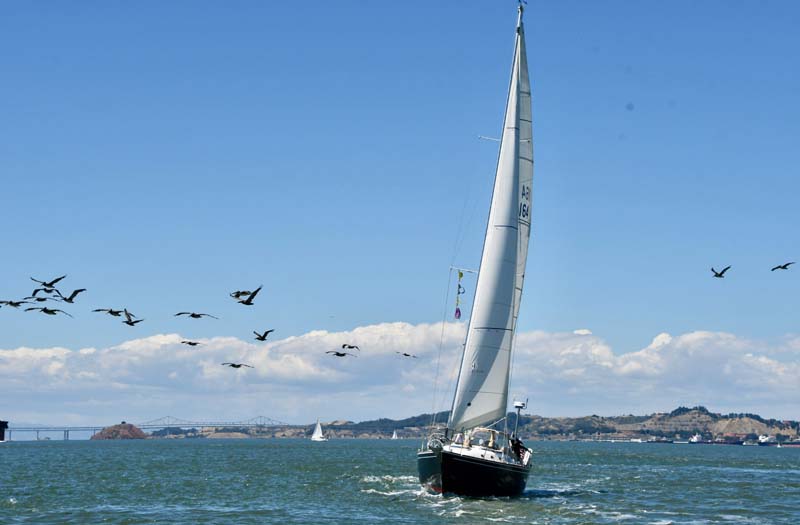
Sailing is always more interesting on a clean, healthy ocean and surrounded by abundant marine life. As a bonus, Richmond Yacht Club member Mike Josselyn sent news that, on the eve of World Ocean(s) Day, the Bay’s only marine research facility, the Romberg Center in Tiburon, received a six-month reprieve from its impending closure. The hope comes as the result of local fundraising and recent negotiations started with a foundation interested in supporting the center. This gives the research center until about January 2026 to work out an arrangement to keep the center open for the long term.
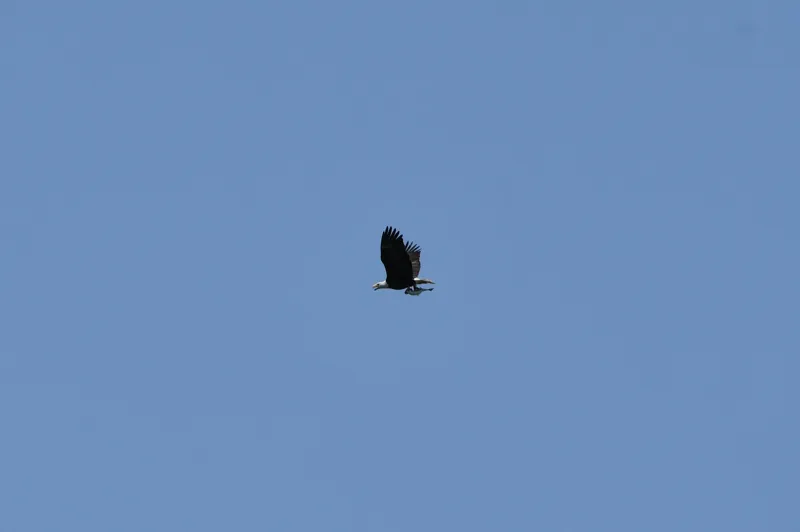
Another ocean bonus for sailors has been the large number of gray whales we’ve seen this year while sailing. Scientists estimate there have been about 33 different whales on the Bay, though, unfortunately, the frequent sightings have been accompanied by an unusually high number of whale deaths in Northern California. That number is currently at 15. Three of the deaths appear to be ship strikes, while the reasons for the other deaths remain a mystery. It’s a high number of deaths this year, though S.F. Gate reported that deaths along the whole coast are not far out of line from normal annual totals.
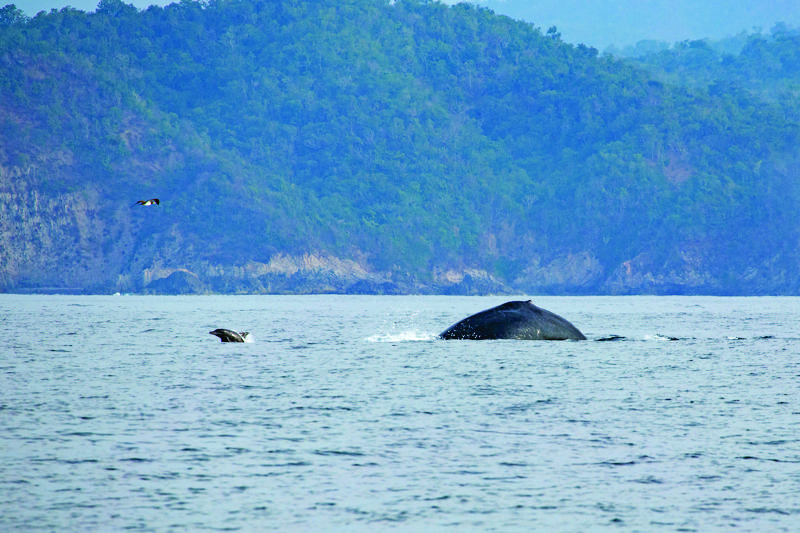
In Southern California the San Diego Maritime Museum will be celebrating World Ocean(s) Day with complimentary screenings of David Attenborough’s new documentary Ocean, included with general admission and free to museum members. The documentary will be shown at the Maritime Museum of San Diego aboard the museum’s Victorian-era steam ferryboat Berkeley twice daily, at 2:30 p.m. and 5:00 p.m., Saturday and Sunday, June 7 and 8. Refreshments will be available for purchase. More information here: https://sdmaritime.org/
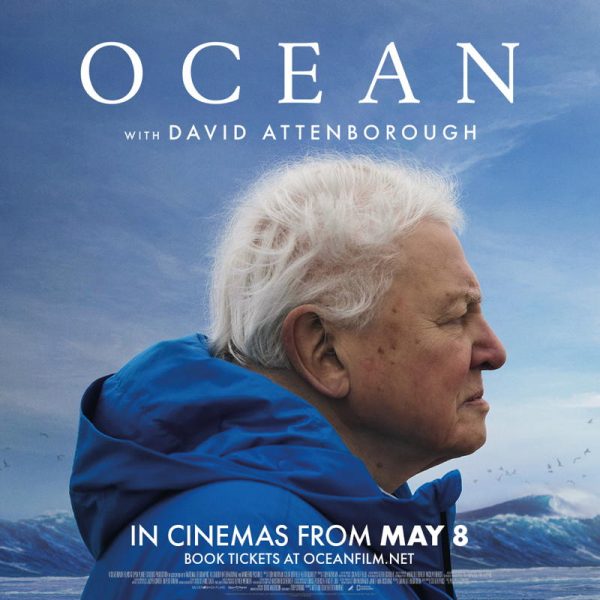
The best way to celebrate both World Oceans Day and World Ocean Day is to get out on a sailboat for a full day of wind-powered, fossil fuel-free sailing. If you’re out there give a tip of your hat to the saltwater oceans that really do keep the whole world afloat.
Another way to participate (though not specifically this weekend) is to visit “Rising Seas,” a family-friendly series of free public art performances designed to engage the community in creative conversations around climate change and to inspire local action. The performances feature live music, dance, and theater, and are currently taking place in Alameda’s waterfront parks on Saturdays — June 21 at Harbor View Park, Alameda; July 12 at Shoreline Park, Bay Farm; and August 23 at Bohol Circle Immigrant Park. More information here.
What are your weekend sailing plans? Race, cruise, daysail, boat work?

